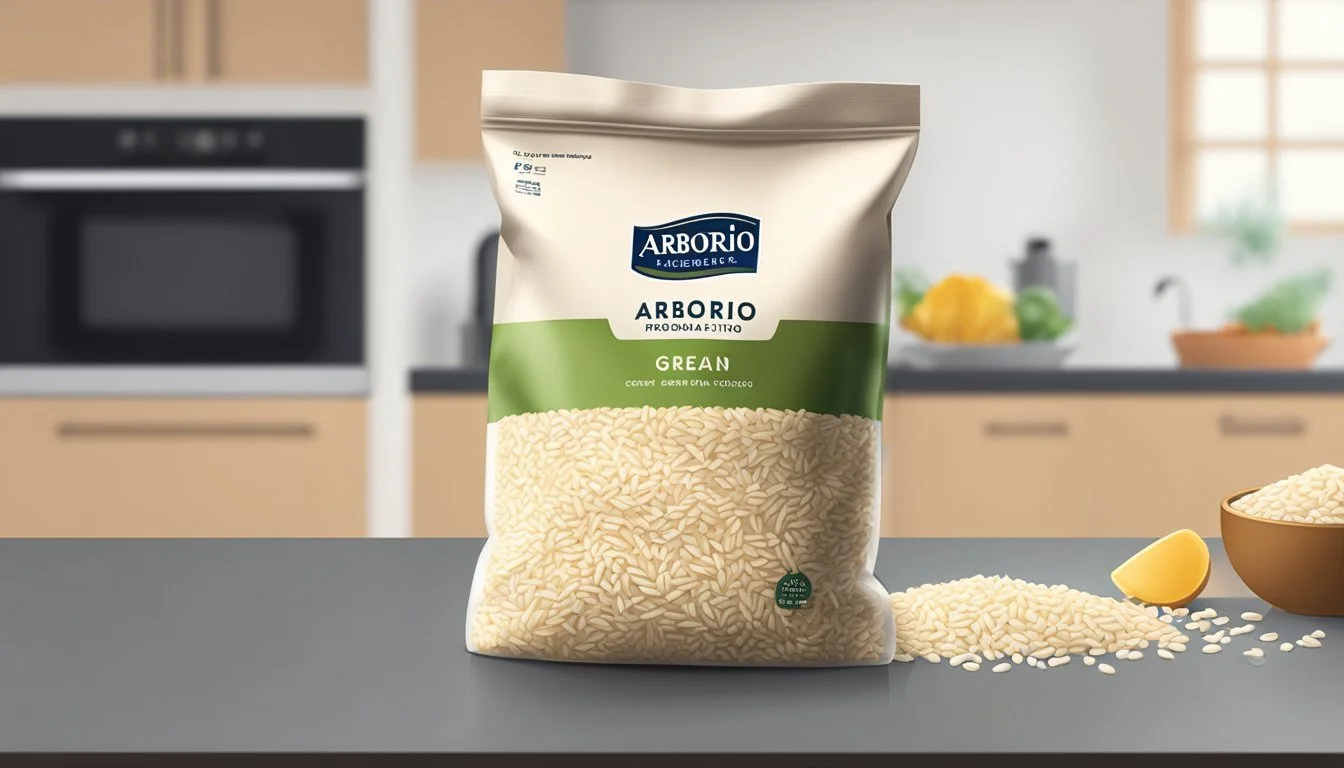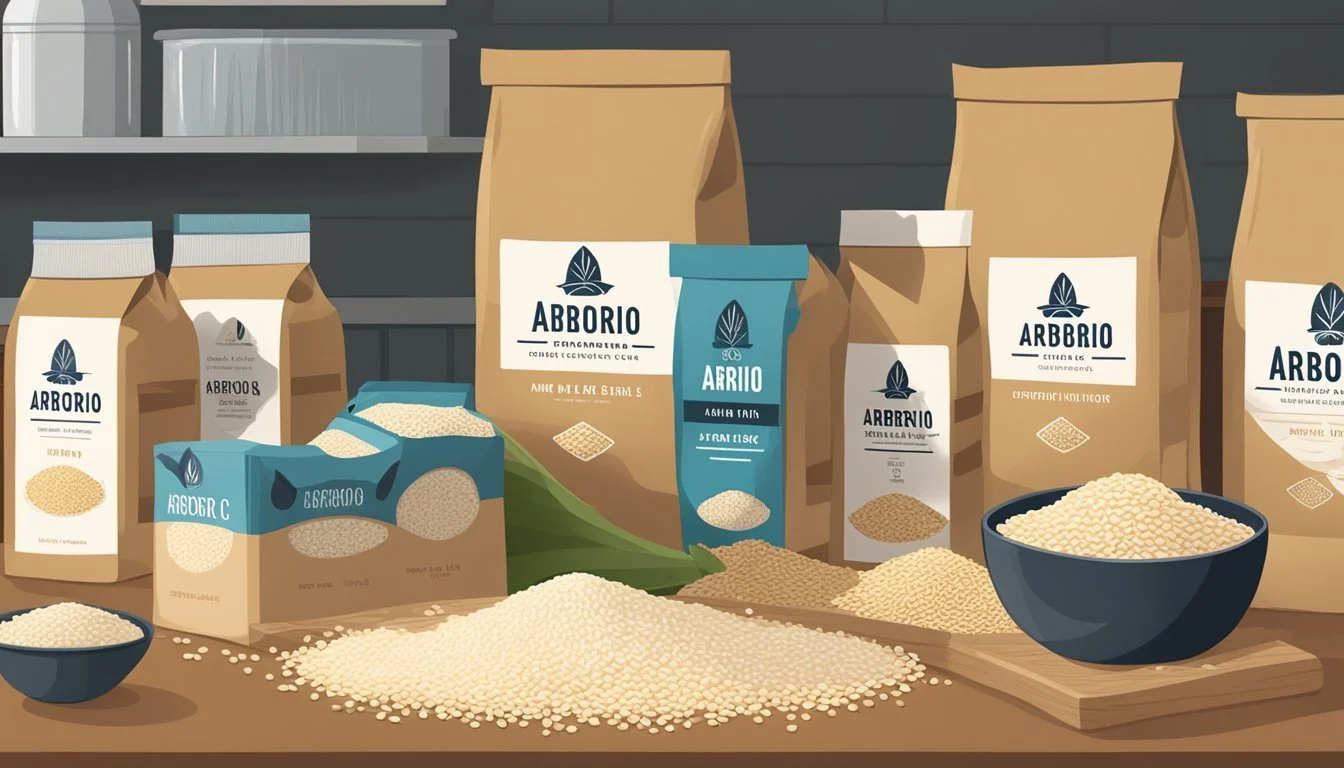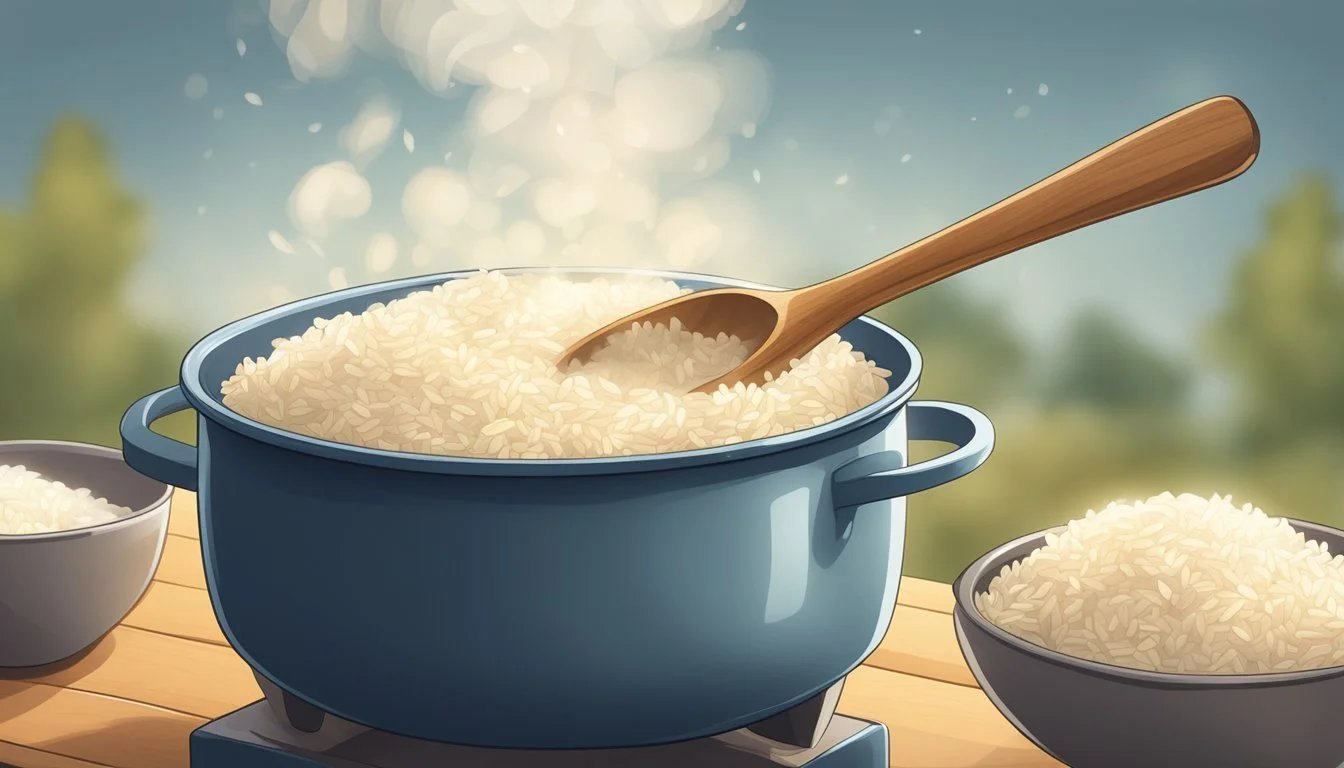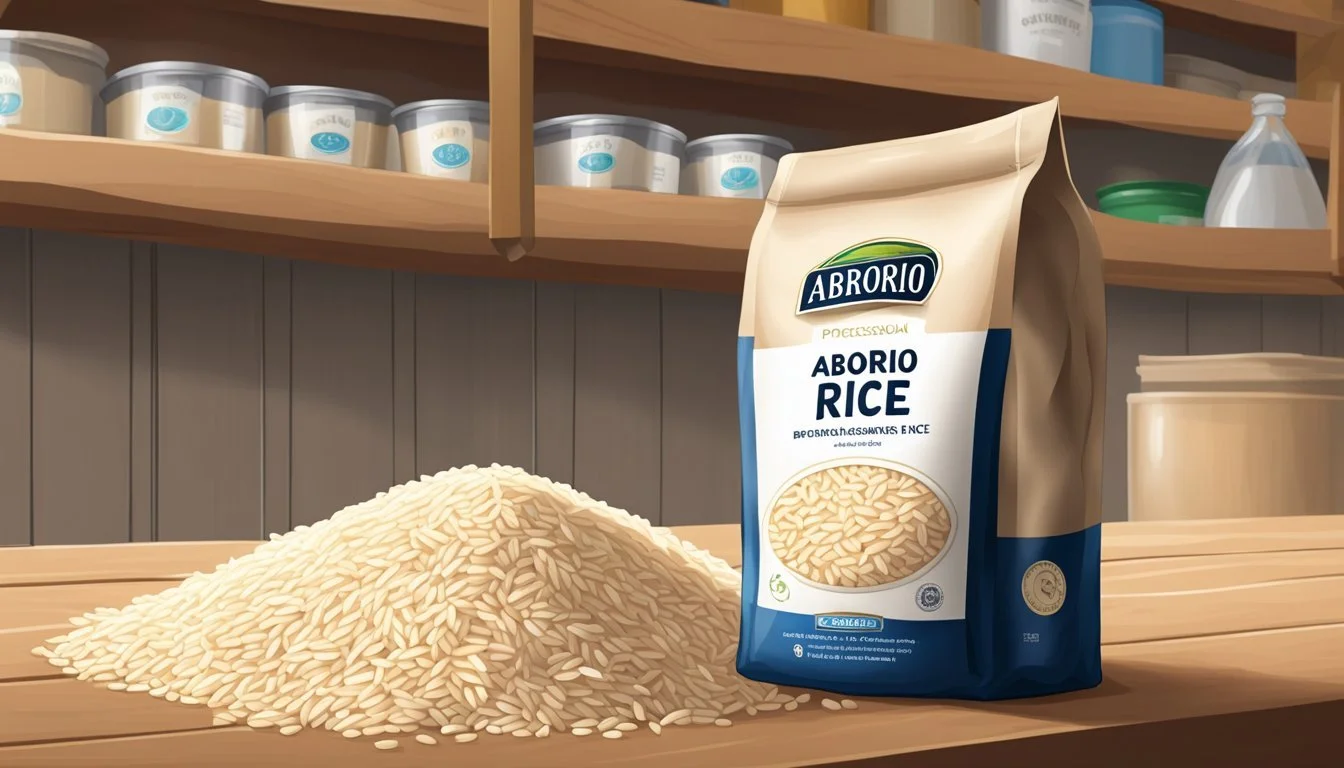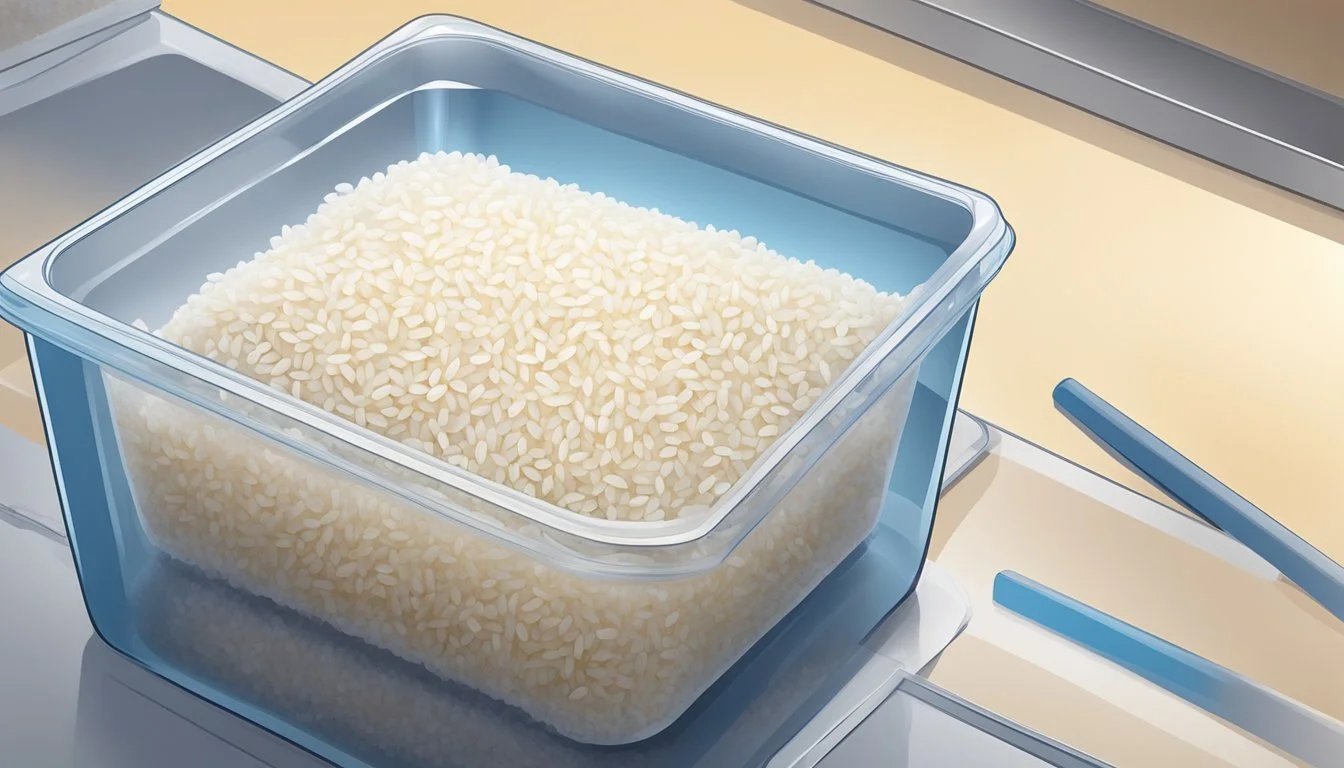Does Arborio Rice Go Bad?
Understanding its Shelf Life and Storage Tips
Arborio rice, the staple grain known for its use in risotto, indeed has the potential to spoil. Like all rice (What wine goes well with rice?) varieties, arborio rice's shelf life is finite, although it is relatively long when the rice is stored properly. The nature of arborio rice, which is a medium-grain rice rich in amylopectin, gives it a characteristic creamy texture and flavor when cooked, which can be compromised if the rice is no longer fresh.
The longevity and quality of arborio rice are contingent on proper storage conditions. A cool, dry place away from direct sunlight is ideal for preserving its flavor and extending its shelf life. Signs of spoilage in arborio rice include an off-smell, changes in texture, and a loss of flavor. In more extreme cases, the presence of mold or a rancid odor indicates that the rice has gone bad and should not be consumed.
Properly stored, uncooked arborio rice can maintain its quality for an extended period, often years, whereas cooked arborio rice has a significantly shorter shelf life, particularly if left at room temperature. For cooked rice, refrigeration is necessary, and to extend its life further, freezing is a commendable option. Regardless of the state—dry or cooked—vigilance in storage is key to preserving arborio rice's desirable qualities.
Understanding Arborio Rice
Arborio rice is a staple in Italian cuisine, recognized for its creamy texture and ability to absorb flavors. It is a variety of short-grain rice rich in amylopectin, a starch responsible for its unique qualities.
Characteristics of Arborio Rice
Arborio rice is characterized by large, plump grains with a high starch content, primarily amylopectin. This starch is what gives dishes like risotto their hallmark creamy consistency. The grains of Arborio rice are shorter and rounder compared to other rice types, and they tend to maintain a firm center, even when fully cooked. When prepared, Arborio rice releases starch into the surrounding liquid, creating a velvety, rich sauce-like coating for each grain.
Grain Size: Large and plump
Starch Content: High in amylopectin
Texture When Cooked: Creamy exterior with a slightly firm center
Comparison With Other Rice Types
Arborio rice differs from other types of rice in several ways. Other types of short-grain rice may also produce a creamy texture, but Arborio rice is specifically sought after for classic Italian dishes due to its optimal balance of firmness and creaminess. Long-grain rice varieties, such as Basmati or Jasmine, are less suitable for dishes like risotto or rice pudding because they are lower in amylopectin and have a drier, fluffier texture after cooking.
Long-Grain Rice: Low amylopectin content, drier and fluffier texture
Other Short-Grain Rice: Similar creamy texture but may vary in firmness and flavor absorption
It can also be compared to other medium-grain rice types, like Valencia or Bomba, which are used in Spanish dishes like paella. These varieties also absorb liquids well and maintain firmness, but their texture will be less creamy than dishes made with Arborio rice.
Arborio Rice: Preferred for risotto, creamy texture, higher amylopectin
Valencia/Bomba Rice: Used for paella, firm texture, less creamy
Shelf Life and Spoilage
Arborio rice, like other rice varieties, has a defined shelf life and, under certain conditions, can exhibit spoilage. Proper storage significantly impacts its longevity, while overlooking storage guidelines may lead to common spoilage signs.
Determining Rice's Shelf Life
The shelf life of uncooked Arborio rice typically extends between 18-30 months when stored properly in a cool, dry place. If stored at temperatures around 50°F (10°C), the rice keeps its quality longer. In the presence of oxygen absorbers and cooler temperatures, Arborio rice's edible period could potentially extend to as much as 10 years. Once cooked, Arborio rice should be consumed within 4-6 days if refrigerated but can stay safe up to 6 months if stored in freezer-safe containers and frozen.
Common Signs of Spoilage
Arborio rice exhibits several tell-tale signs when it goes bad:
Smell: An off or rancid odor indicates spoilage.
Color: Any discoloration or the presence of mold, which may appear as green, blue, or black spots, signifies that the rice should not be consumed.
Texture: If the rice has a slimy or gritty texture, it has likely spoiled.
Pests: The appearance of bugs or insects in the rice is a clear sign of contamination and spoilage.
Factors Contributing to Spoilage
The factors influencing Arborio rice spoilage include:
Temperature: Storage areas with high temperatures accelerate spoilage.
Moisture and Humidity: Excess humidity can foster mold growth and make rice go bad more quickly.
Light: Direct sunlight can degrade the quality of the rice and lead to spoilage.
Oxygen: Overexposure to air can cause the rice to become rancid.
By controlling these factors, the shelf life of Arborio rice can be maximized, minimizing the risk of spoilage.
Proper Storage Techniques
Proper storage of Arborio rice is essential to maintaining its quality and extending its shelf life. By storing Arborio rice correctly, one can prevent spoilage and ensure it retains its characteristic texture and flavor.
Storing Uncooked Arborio Rice
Uncooked Arborio rice should be stored in a cool, dry place, such as a pantry. To best preserve its quality, it is advisable to keep the rice in an airtight container. This prevents exposure to moisture and other contaminants. Furthermore, storing rice away from strong odors is important as it can easily absorb odors, which can alter its taste.
Temperature: Ideally, a pantry at 50°F (10°C) is optimal.
Oxygen Absorbers: If storage temperatures are around 70°F (21°C), using oxygen absorbers can significantly extend the rice's lifespan.
Storing Cooked Arborio Rice
Once Arborio rice is cooked, its storage needs differ to prevent spoilage and maintain its edibility. Cooked rice should be promptly stored in the refrigerator to slow down bacterial growth.
Refrigerator: Place cooked rice in an airtight container and store at refrigerator temperature, usually between 35°F (2°C) and 40°F (4°C).
Freezer: For longer-term preservation, cooked Arborio rice can be stored in the freezer. Utilize heavy-duty freezer bags or durable, freezer-safe containers to prevent freezer burn.
It is essential to cool the rice to room temperature before transferring it to the freezer to prevent moisture buildup.
When reheating, adding a small amount of liquid can help rehydrate the rice and restore its texture.
Safety and Food Poisoning
When considering the safety and longevity of arborio rice, it is crucial to understand the risks associated with bacteria and the potential for foodborne illness. Proper storage and cooking methods can mitigate these risks.
Risk of Bacteria and Foodborne Illness
Arborio rice, like any other food product, can harbor bacteria if not handled correctly. It is susceptible to contamination by Bacillus cereus, a bacteria known to cause food poisoning. This bacterium can produce spores that are resistant to heat and could survive the cooking process. If rice is left at room temperature after cooking, these spores may germinate and multiply, increasing the risk of food poisoning.
Signs of Contaminated Rice:
Unusual odor
Off taste
Visible mold, identified by green, blue, or black spots
Preventing Contamination and Food Poisoning
Maintaining the safety of arborio rice involves careful handling and storage:
Cooking: Always cook rice thoroughly to kill any pathogens.
Storage:
Store dry arborio rice in a cool, dry place; a pantry at 50°F (10°C) is optimal.
Utilize oxygen absorbers when storing above 70°F (21°C) to increase shelf life.
Refrigerate cooked rice within two hours of cooking to slow bacterial growth.
For longer-term storage, freeze cooked rice in freezer-safe containers.
Following these guidelines helps to ensure health and safety by minimizing the presence of contaminants and reducing the risk of foodborne illness.
Cooking and Using Arborio Rice
When cooking Arborio rice, the goal is to achieve the iconic creamy texture while preserving its al dente bite. This process requires proper technique and an understanding of the best reheating methods to maintain Arborio rice's quality in Italian dishes like risotto.
Preparation Tips for Perfect Risotto
Cooking risotto on the stovetop involves a 2:1 water-to-rice ratio. One starts by sautéing finely chopped shallots in butter and then stirring in the Arborio rice to coat it well. Gradually adding warm broth and stirring continuously allows the rice to release its starches, creating that classic creamy texture that risotto is known for. It’s essential that one does not rush this process; patience and attention are the ingredients for a perfect risotto.
Rice Cooker: While not traditional, one can use a rice cooker for Arborio rice. Opt for the "porridge" or "risotto" setting if available, to accommodate the need for gradual liquid absorption.
Microwave: Although not ideal for risotto, one can cook Arborio rice in a microwave using a covered microwave-safe dish and reducing the liquid ratio slightly to account for less evaporation.
Reheating and Maintaining Quality
Reheating Arborio rice while preserving its taste and freshness is straightforward. Whether on the stovetop or in a microwave, the key is to add a little bit of water or stock to prevent dryness and to heat it gently until just warmed through. This helps to maintain the creamy consistency and prevents the rice from turning hard or dry.
Stovetop: Gently simmer the rice with a splash of stock, continuously stirring, until it is heated thoroughly.
Microwave: Sprinkle some water over the rice, cover with a microwave-safe lid or wrap, and heat it in short bursts, fluffing it at intervals.
Arborio Rice in Recipes
Aside from risotto, Arborio rice is a versatile ingredient in other Italian dishes. It imparts a creamy texture to rice puddings and can be used in soups to add body and richness. When using Arborio rice in recipes, always consider how its unique properties can enhance a dish, not just in taste but in bringing joy to the culinary experience. Keep in mind:
Freshness impacts flavor: Use Arborio rice within its shelf life for the best taste.
Adjust liquid: Recipes may require more liquid compared to other types of rice due to Arborio's absorbent nature.
Arborio Rice Longevity Considerations
Arborio rice, like other rice varieties, can deteriorate over time. Understanding the impact of packaging and processing, along with adhering to best storage practices, is key to maximizing its shelf life.
Impact of Packaging and Processing
Packaging plays a pivotal role in the shelf life of Arborio rice. Rice that is vacuum sealed or packed with oxygen absorbers will last longer than rice in standard packaging. Processing also affects longevity; for example, milled varieties like white Arborio rice have a longer shelf life than brown rice, as the process of milling removes oils that can hasten spoilage.
Vacuum Sealed Packaging: Extends freshness by reducing exposure to air.
Oxygen Absorbers: Can significantly increase the shelf life, especially when stored at warmer temperatures.
Processing techniques distinguish Arborio from other long-grain rice varieties, such as basmati rice or jasmine rice, which may have varying shelf lives due to different oil content and packaging standards.
Best Practices for Extending Shelf Life
To extend the shelf life of Arborio rice, practice the following best practices:
Cool, Dry Storage: Maintain a storage environment with temperatures around 50°F (10°C) to keep rice fresh for longer periods.
Freezing Cooked Rice: Storing cooked Arborio in freezer-safe containers can preserve its quality.
Avoid Heat and Sunlight: These elements expedite spoilage and can degrade rice quality.
Control Humidity: Use airtight containers to protect against moisture which can lead to mold growth.
These guidelines apply to all varieties, including wild rice, bomba rice, and others, with each type requiring similar care to ensure maximum longevity.
Alternatives and Substitutions
While arborio rice is preferred for its creamy texture in dishes such as risotto, sushi, and rice pudding, its availability or shelf life might prompt the need for alternatives. One can consider a variety of substitutes that cater to different dietary needs and preferences.
Quinoa is a healthy substitute that is rich in protein. Although it lacks the starchiness of arborio rice, it can be used in both hot and cold dishes as a side dish or in stuffing.
Bomba rice, another type of rice, is a suitable substitute, especially for making paella. Its ability to absorb liquid while maintaining structure makes it a fine stand-in.
For those looking for substitutes within pasta varieties, pearl barley is an option. When cooked, it offers a chewy texture and a nutty flavor that can complement a variety of recipes, including soups and stews.
Below is a list of additional options, along with their best uses:
Substitute Best Used In Note Short Grain Brown Rice As a healthier, fiber-rich option in stir-fries and fried rice. It has more nutrients but is less sticky compared to arborio. White Basmati Rice In dishes where a fluffy, less creamy texture is desired. It’s aromatic and has a long, slender grain. Wild Rice For a robust, earthy flavor in salads, soups and as a stand-alone side dish. It's not a true rice but is a delightful, nutrient-rich grain.
When substituting arborio rice with another grain, one must adjust the cooking method to achieve the desired consistency, since each grain has its unique properties and cooking requirements.
Freezing Arborio Rice
Freezing is a practical approach to extend the shelf life of both cooked and uncooked Arborio rice. When employing the freezer, users can prevent spoilage and retain the rice’s quality over an extended period.
How to Freeze and Thaw Rice
To freeze Arborio rice effectively, it should be cooled completely prior to storage. For uncooked rice, users should place it in airtight containers or heavy-duty freezer bags to shield it from moisture and odors. To freeze cooked rice, it’s important to portion the rice into serving sizes, using freezer-safe containers or bags, to facilitate easy thawing and to prevent waste.
Thawing of frozen Arborio rice can be managed in two ways. A user might choose to transfer the rice to the refrigerator, allowing it to thaw gradually, usually overnight. Alternatively, for a quicker method, one can directly heat frozen rice in the microwave or on the stovetop. When heating, adding a small amount of water can help restore moisture.
Effects of Freezing on Texture and Flavor
Freezing can affect the texture of Arborio rice; many users find that it remains acceptable, especially if the freezing process is handled correctly. However, one must be mindful of freezer burn, which can occur if rice is not properly sealed or exposed to air in the freezer. This may result in a dryer texture and a less appealing flavor.
Regarding the flavor, frozen Arborio rice generally maintains its taste well, particularly when stored properly and used within an optimum period. It's crucial to note that prolonged storage in a freezer can gradually degrade the flavor of the rice. Thus, it’s recommended to consume frozen rice within a few months to ensure the best quality.

